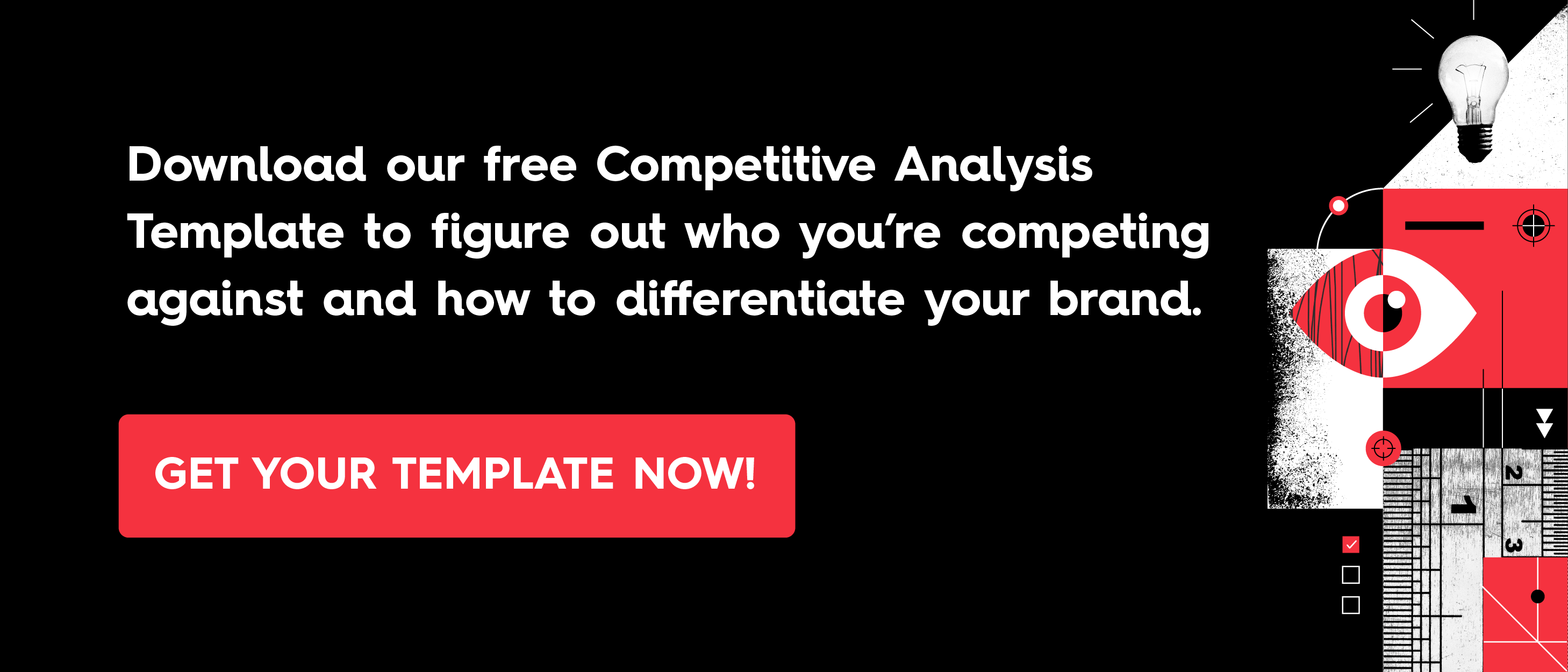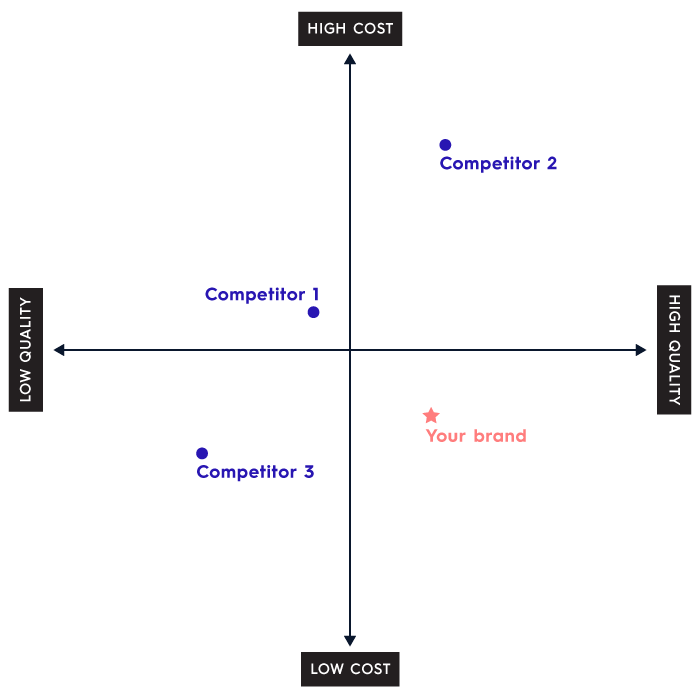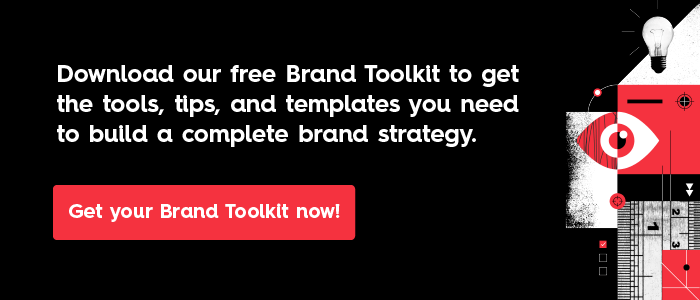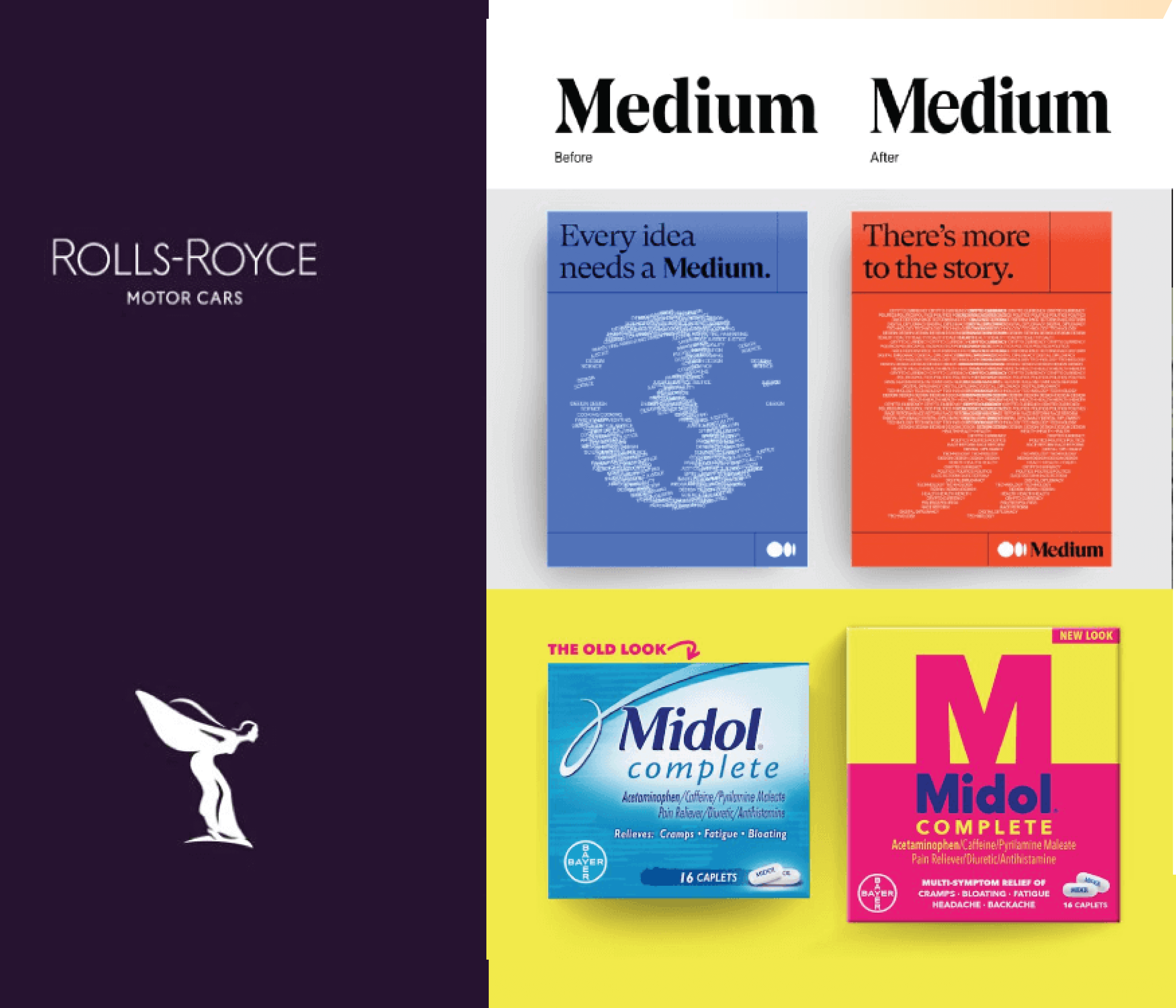If the thought of doing a competitive analysis makes you want to grab lunch and never come back, that tracks. It sounds tedious, overwhelming, and boring. Still, if the goal is to build a strong, healthy brand and own a real slice of the market, it’s a must-do.
At its core, competitive analysis is about understanding who you’re up against and what they’re doing. You look at their strengths, their weak spots, how they talk to customers, what they charge, where they show up, etc. Once you see the full picture, your own strategy becomes clearer. You spot the gaps you can fill, the things you’re already doing better, and the areas where you need to step up.
Luckily, the process doesn’t have to be as painful as it seems. Whether this is your first time doing it or it’s time to revisit your competitive analysis, our guide keeps it simple.
Note: Start by downloading our Competitive Analysis Template to work through this guide.
What Is a Competitive Analysis?
Before outrunning the competition, you need to know the terrain. A competitive analysis (or competitor analysis) identifies who you’re up against, how they position and present themselves, and where their strengths and weaknesses sit compared to yours.
A clear read on the market helps you:
- Catch trends early.
- Find gaps worth owning.
- See what people actually want vs. what teams assume they want.
This isn’t just about watching others. It’s about decoding how they operate and where you can play differently.
Why Do You Need to Do a Competitive Analysis?
In short, to win your market. Or, rather, to get an objective understanding of where they stand so that you can differentiate and position yourself for world domination.
Here’s what a solid analysis actually does for you:
- Shows you the real gaps and overlaps between you and competitors (not just surface-level stuff, but the meaningful differences that shape how people make decisions)
- Sharpens your positioning and messaging so they land harder with the people you’re trying to reach
- Helps you craft selling points that actually close deals instead of sounding like everyone else
- Uncovers growth opportunities while they’re still sitting there waiting to be grabbed
Want more people to find you, convert faster, and remember your brand when it counts? A competitive analysis is the first step.
When Should You Do a Competitive Analysis?
Do it when launching or refreshing a brand. If you’ve never done one, start now. You’ll also want to revisit it when new players enter the market or when shifts happen that change how people buy.
“The greater the insight into the competition, the greater the competitive gap.”
—Alina Wheeler, Designing Brand Identity
Who On Your Team Should Be Involved?
A competitive analysis works best when you involve diverse perspectives from across your organization.
- Your marketing team should participate to understand competitor positioning and messaging strategies
- Sales representatives offer invaluable frontline insights about what prospects say when comparing your solution to rivals.
- Product managers and developers need to be involved to evaluate feature gaps and innovation opportunities
- Customer success team can highlight what clients mention about alternatives they’ve considered or switched from.
Don’t overlook your executive leadership for strategic perspective, and consider including finance to assess competitor pricing models.
The key is assembling a cross-functional group that interacts with your market from different angles. Each person will spot competitive threats and opportunities that others might miss, creating a more complete and actionable analysis.
How to Do a Competitive Analysis
The goal isn’t to write a novel on each competitor. It’s to gather useful intel that helps you understand how you can better compete.
Use both primary and secondary research:
- Primary: interviews, surveys, customer calls, win/loss analysis.
- Secondary: competitor websites, pricing pages, case studies, product docs, press releases, earnings calls, and industry reports.
Review the essentials:
- Performance signals: growth, funding, hiring, reviews. Try Crunchbase and G2.
- Offerings and pricing: tiers, packaging, free trials, SLAs.
- Sales and marketing: channels, campaigns, CTAs, content quality, SEO.
- Brand: voice, visuals, proof points, social proof.
- Market presence: partnerships, categories, ecosystems.
Build risk awareness into the analysis so threats don’t surprise you.
Step 1: Assemble a List of Competitors
To find your competitors, look for brands that offer similar products or services or show up for the same terms you’re competing for. Brain-dump every brand in your space, from obvious rivals to those people might confuse with you. Tools to help here:
- Keyword and visibility: Ahrefs, Semrush, Moz.
- Market context: Google Trends, Exploding Topics.
- Category lists: G2 Grids and Capterra.
- Traffic and tech stack: Similarweb, BuiltWith.
Cast a wide net, then trim later. Note: It’s always smart to revisit your competitor list, as new competitors will constantly emerge.
Step 2: Split Them Into Direct and Indirect Competitors
Create two buckets: current and aspirational.
- Current competitors: brands actively competing for the same people and use cases.
- Aspirational competitors: best-in-class brands you’d like to sit beside, regardless of size.
Clarity here shapes your strategy and storytelling.
Step 3: Work Through the Template
Duplicate the template for each competitor, then print, email, or share with the team. Review each competitor’s brand from tagline to values to visual identity (logo, colors, typography).
Capture:
- Brand Heart (purpose, vision, mission, values)
- Strengths and weaknesses
- Similarities and differences
- Threats
- Value proposition
- Market positioning
- Unique selling points
- Products and services
Remember: Short and clear beats long and vague descriptions. The aim is to spot patterns and outliers that influence how you position. You will likely start to notice trends like shared color palettes, feature-forward messaging, or a race-to-the-bottom on price. Those patterns signal where to zag.
Conduct a SWOT Analysis
SWOT is the quick way to see what’s working, what’s not, and where to move next. Map strengths, weaknesses, opportunities, and threats across your brand and the field. A short example:
- Strength: strong reputation and high retention.
- Weakness: premium pricing with confusing tiers.
- Opportunity: fast-growing segment with poor onboarding across competitors.
- Threat: new low-cost player bundling adjacent features.
Use it to guide decisions across marketing and product. For reference, here’s a concise SWOT Analysis Guide.
Compare Product Features
Feature comparisons expose the real tradeoffs people weigh. Look at:
- Core features and must-haves.
- Pricing, packaging, and limits.
- Integrations and ecosystem.
- Performance and reliability.
- Proof points: reviews, case studies, benchmarks.
Use structured matrices to keep this clean. (Here’s a feature comparison template if that’s helpful too.)
Identify Market Gaps
Gaps show up where people struggle and current options disappoint. To find those gaps:
- Read reviews for pain language (e.g., G2 and Reddit).
- Talk to recent buyers and lost deals.
- Watch search trends and new keywords with tools like Google Trends.
Then validate with a small test—landing page, waitlist, or prototype—and measure interest before building big.
Competitor Website Analysis
Websites reveal strategy in plain sight. Review:
- Messaging: headline promise, proof, CTAs.
- UX: clarity, navigation, page speed. Try PageSpeed Insights.
- Content: formats, depth, expertise.
- SEO: topics, internal links, schema. Use Ahrefs or Semrush.
- Social and email: cadence, quality, offers.
As an example, compare two ecommerce brands: one puts shipping costs behind checkout, the other shows “Free 2-day shipping” near the price. Guess which one converts more? Small choices change behavior.
In short, use competitive, SWOT, product, market, and website analysis to pull out the few insights that matter. Then act on them.

Step 4: Articulate Your Competitive Advantage and Identity
Document the same elements for your brand as it stands today. If some pieces aren’t defined yet, this work will surface what needs attention.
Consider how you want to:
- Emulate what aspirational brands do well (e.g., compete on value).
- Avoid what misaligned brands do (e.g., race on price).
Remember: Original and true beats copycat.
Step 5: Identify Your Niche
Map your position with simple Cartesian charts. Plot different spectrums to see patterns:
- Low cost vs. high cost
- Low quality vs. high quality
- Traditional vs. contemporary
- People-focused vs. automated/scalable
- Niche vs. comprehensive
Also consider current and potential market share to gauge where your growth can come from. By the end, you should be able to answer the core question: Why should someone choose you over another option?

Build Your Brand and Business Strategy to Help You Win
With a clear competitive analysis, you can refine (or build) a brand strategy that communicates who you are, what you do, and why it matters. Just ground it in how competitors meet needs so differentiation is real, not theoretical. For next steps:
- Identify your target demo. Learn how to craft personas that help you connect with the people you’re trying to reach.
- Identify your Brand Heart. Use this free workbook to document purpose, vision, mission, and values.
- Refine your brand messaging. Use this brand messaging framework and these tips to craft copy that converts.
- Design a comprehensive visual identity. Build your logo, typography, and color—then use this visual identity checklist.
- Create your brand guidelines. See how to create comprehensive brand guidelines that make on-brand content easier.
- Tell the right story at every stage. Start by mapping how people buy to find messaging opportunities and content gaps.
Need help at any step? Use these tips to find and vet a creative agency, or get in touch to talk through a competitive analysis and next steps.






This is very helpful….
So now I can name my Brand
“Asker professional limited (APL)The place of quality home (interior and exterior aesthetics
great content i want to learn more
We got plenty for ya! Start with our resources: https://www.columnfivemedia.com/resources/